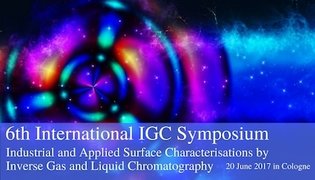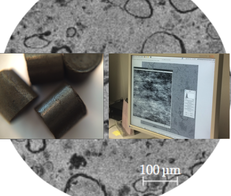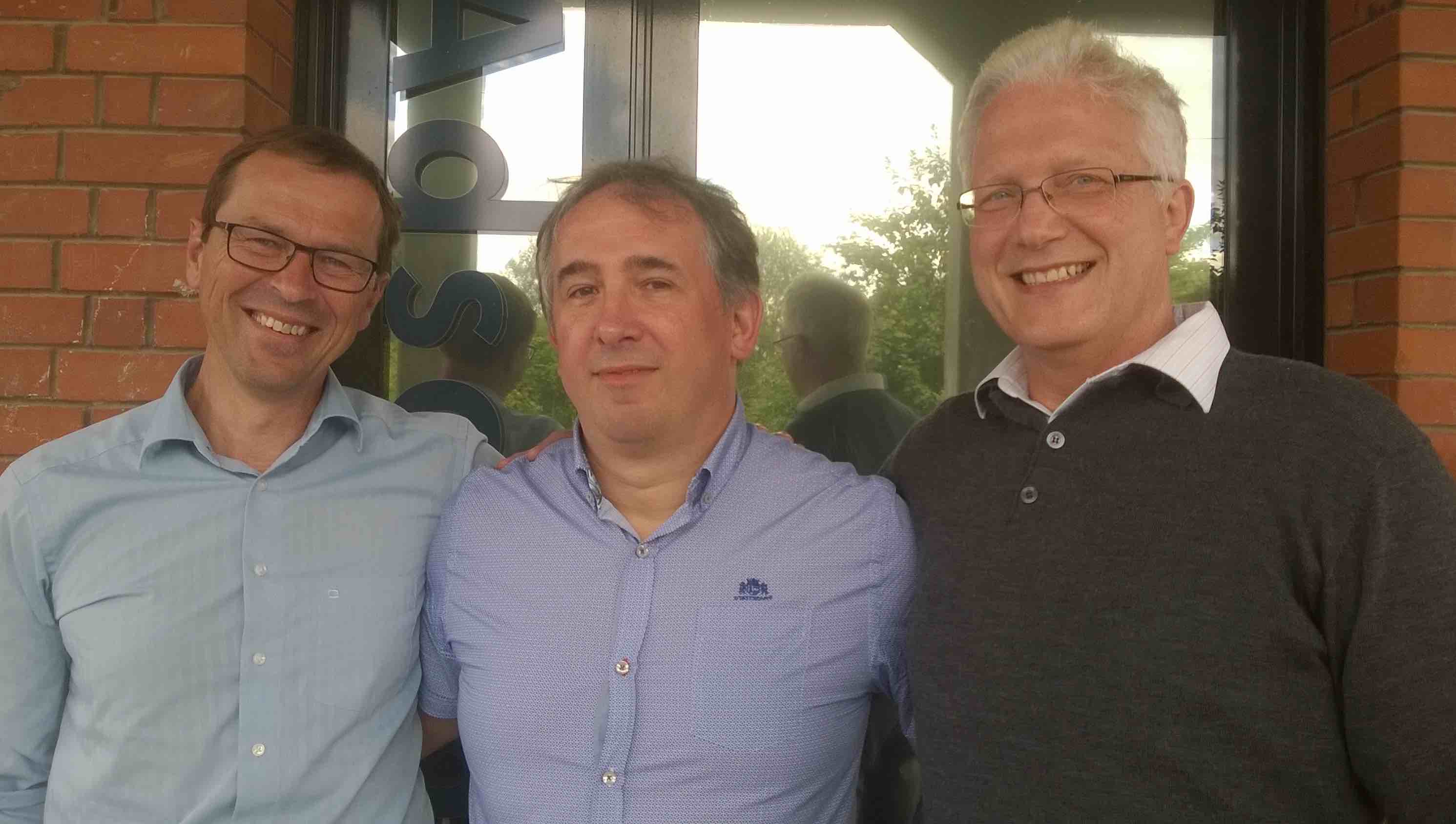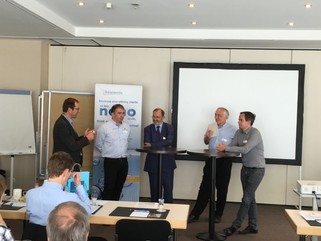Part 1 - How to FIND Do you have access to all scientific journals and time to follow-up questions in the literature for your R&D team? We assume that the vast majority of your answers will be: “No” If you answered “Yes”, you are one among very few people these days. In true life, companies are cutting down on journal access and adding administrational hurdles to order scientific articles. There are only a few tools to organize the information collected, and maybe some may even use Excel. Even if all those obstacles are cleared, where do you find the time needed for an efficient evaluation? “We don’t find the time and brainpower for a 1-2 day focussed search and evaluation“ is a common comment of our customers. You want to use scientific information more? You need to use scientific information more to make better decisions? We decided to share our experiences, tool tips and hints to reach this goal in a cost- and time-efficient way. In the coming months I will share my personal tips and hints and present you one tool after the other. There are three categories:
Featured tools today in the category ”FIND” Google Scholar Google Scholar is a relatively powerful tool. Search results can be sorted or selected by year, citations are displayed and alerts can be set - not bad for a free service! Example: "Inverse Gas Chromatography" delivers 309'000 hits. This are definitely to many to search efficiently, but sorting by date or significance or adding a substrate provides more or less good results. In additions, citations are provided offering an elegant way to search forward based on a relevant publication. SciFinder Scifinder provides a well-structured search, especially for chemical experts. It is very useful to have if you are working in the chemical industry. However, the costs of several thousand Euro per year may not be neglected for an SME or a startup. Example: "Inverse Gas Chromatography" as entered delivered 1867 references and as concept 3855 references. Wow - this is much more precise! And it can be precisely refined by substances, authors or other topics. Google scholar is not there yet... but maybe soon with advanced text recognition and artificial intelligence. ISI Web of Knowledge ISI web of knowledge is another source. It covers several databases many more disciplines than SciFinder. Often used in academia and – of course – quite costly for industrial use. What to do with the information? A brief, but focussed literature research can be very powerful, or as one of our customers said: “Your report is an important jigsaw piece to solve our problem …” We could also be your Research Partner delivering a brief, concise report and Recommendation. Contact us for a free consultation call for your specific request. NEXT TIME: more info about ACCESS and STORE & RETRIEVE with tools like DeepDyve, Researchgate and Papers.
0 Comments
 Surface properties It is all about characterizing surface properties especially of particles, fillers, fibers, even minerals for flotation. IGC stands for Inverse Gas Chromatography (IGC), a method where the material with unspecified surface properties is being placed inside a GC column. But let's go step by step. Practical examples and an amazing variety of topics! This is already the third time we are organizing this symposium together with Adscientis, but this time the program offers so far the greatest variability, practical examples and broadest learning experiences. Characterization of TiO2 pigments, metal-organic frameworks, minerals and porous glass surfaces All these materials have been studied and optimized by Kronos International, Fraunhofer Institute, Helmholtz-Zentrum and University of Leipzig using pulses of gases, also known as Inverse Gas Chromatography. But how did surface energy, nanoroughness, polar interactions or Ka, Kb-values translate into better understanding of the products? The experts will share their experiences! Surface Properties of Organic materials For example, polysaccharides change surface properties by functionalization. And IGC is a very sensitive tool to measure it, as Dr. José Gamelas will explain. He published 2013 an excellent review about surface properties of cellulose and lignocellulosic material by IGC, see link. Difficult to measure Hansen Solubility Parameters (HSP) of excipients and liquids can be determined as a liquid layer by IGC. Dr. Eric Brendle, Adscientis, will explain the results he obtained on this topic for many pharma companies. Inverse Liquid Chromatography - even more applied IGC and it derived values have a very solid theoretical fundament, but sometimes the application is just in liquid phase and it is more interesting to study the behavior in-situ. Inverse Liquid Chromatography (ILC) may offer a way to study adsorption and desorption behavior under very controlled conditions, but in liquid phase and in-situ! Dr. Matthias Kellermeier, BASF, will provide some industrial examples of ILC. The physicochemical properties of hydroxyapatite (“bone mineral”) based on ILC will be shown by Dr. Katarzyna Adamska. And for sure, some discussion will arise, where ILC might be used, too. This IGC Symposium has a nice tradition of bringing together industrial and academic experts, foster exchange and support different approaches - with the goal to learn from each other and advance. We, the organizers, are proud to keep it this way! Courious? Read more and register here: http://inverse-chromatography.com More material Prof. Steven Abbott has an amazing way to present complex topics, like IGC, in short, 4-5 min videos. In cooperation with Eric Brendle, Adscientis and myself, he created a nice collection of explainer videos - watch yourself: Are you more interested in the theory or using Apps for own calculations? IGC - what??? Check the video below for a super fast explanation! Ever wondered how your material looks inside? New analytical methods like Microtomography (XMT) are able to generate image data we did not have before: huge amounts of data. In our case 2048 images per sample. Based on synchrotron based X-ray radiation and the computing power of today the sample is analysed in a few minutes or even seconds - with voxel sizes down to 325 nm and quantifiable image analysis. Academic high-tech? Not at all! Industry is encouraged to use the facilities and Inolytix helps you to interact smoothly with researchers. Discover your own products, see what normally stays hidden! The Case Study of heterogeneous catalyst pellets Combination of Methods: 3D-characterization + Microtomography Conventional analysis: Scanning electron microscopy of one (1) image after sample preparation. The Inolytix way: Synchrotron-based X-ray Microtomography with 2048 image slices in 4 minutes without any sample preparation. 3D-image analysis for structural quantification. Are catalyst pellets homogenous? Do the pelletising process and any treatments deliver uniform morphologies? Are there heterogenities or irregularities? These were the underlying questions of a recent study of catalyst pellets we performed. Without any sample preparation, the 3D-characterization of catalysts pellets was possible with synchrotron based X-ray microtomography. Thanks to the additional quantitative image analysis of thousands of images, we could reveal that the catalyst pellets examined had heterogeneous inner structures with distinct differences. Surprisingly, the structural differences were clearly visibly at a scale above 300 nm, i.e. well beyond the scale of micro- and mesopores. Hidden aspects became visible - with new insights for our customer! Find the appropriate analytics for your case Inolytix is your expert to pick and choose the methods that make the most sense for your needs. We draw upon our +20 years of R&D experience to add a 360 degree interpretation of your results. Your Partner for the entire cycle from experiment design to measurement to analysis and interpretation. Contact us for a free consultation call for your specific request. A tri-national cooperation takes surface characterization of powders and fibers by Inverse Gas Chromatography (IGC) to new heights  Dr. Ralf Dümpelmann (Inolytix, CH), Dr. Eric Brendle (Adscientis, F), Dr. Jürgen Adolphs (Porotec, G) Dr. Ralf Dümpelmann (Inolytix, CH), Dr. Eric Brendle (Adscientis, F), Dr. Jürgen Adolphs (Porotec, G) What happens, if three entrepreneurial scientists of different companies but with the same spirit and complimentary skills come together? Right - they come up with ideas for a new product! And that just happened... “It is great to bring all this experience together in this cooperation. It has always been my dream to use my experience to develop a new instrument, and together we can do this. IGC4.0 will be a new standard on the market.” Eric Brendlé, CEO Adscientis Surface characterization of powders, fibers and porous materials today is still very tricky. With a technique known as inverse gas chromatography (IGC) it is possible to detect the real interface properties by pulsing many different gases through a sample. The three tri-national companies Adscientis (F), Inolytix (CH) and Porotec (D) share their passion for scientifically sound solutions, real insights into material properties and industry-oriented services and will be launching a new fully automated instrument on the market in 2017. The combined power of knowledge and project experience of three companies captured in this new instrument will provide a huge added value in R&D departments. Being able to tailor new surface properties will facilitate numerous developments and new products in many industrial segments. Read the detailed announcement of the tri-national collaboration here. Sign up for our newsletter to stay informed about further steps and its market launch in 2017 Best regards Your Inolytix team Video about optimizing your IGC measurements by Prof. Steven AbbottAfter the series about IGC Steven Abbott added another video in which he explains how you can optimize your IGC measurements. You also find the text on his website IGC explained by Prof. Steven AbbottAt the IGC Symposium in June 2016 Prof. Steven Abbott already presented his app for IGC. Now he produced a series of videos and explains the method and the details of IGC and the IGC measurements. Use this great opportunity and learn more about IGC at your desk. Start with the basics and then discover the details in these 4 videos (5 - 7 min each). IGC - The BasicsIGC - Surface MeasurementsMeasuring polymer diffusion coefficients via IGCUsing IGC to measure Hansen Solubility ParametersYou find more details on Steven Abbotts website.
We would love to hear your comments or questions on this. Please share them in the comments below.  Panel with: Ralf Duempelmann, Eric Brendle, Adam Voelkel, Steven Abbott, Matthias Kellermeier Panel with: Ralf Duempelmann, Eric Brendle, Adam Voelkel, Steven Abbott, Matthias Kellermeier It was already the 5th time that the IGC Symposium took place on 14th June 2016. This year the theme was: Surface Analysis by Dynamic Adsorption Methods in Gas and Liquid Phase. We always try to have a mix of speakers from both industry and academia to showcase the use and benefits of IGC in the business and to hear new insights and developments from research at technical universities. The speakers and participants came from different countries, like UK, Germany, France, Switzerland, Poland and Czech Republic. The speakers presented very different aspects of IGC and ILC. For example Dr. Steven Abbott released the new online apps for IGC (more details will follow later) and I shared some critical assumptions in IGC measurements and their impact. The IGC symposium is the best place to learn more about IGC, if you are new to this method. Here you find all the IGC experts and you can talk to each of them in person. Diversity and longterm experience in IGC You can see the diversity and richness from the speakers and presentations:
You find the abstracts and more details about the speakers on: http://inverse-chromatography.com/ If you want to learn more about IGC, the symposium or if you want to participate in the next symposium, please to contact us.  25 seconds of Christmas to relax This is our second christmas with Inolytix. And besides of the christmas cards we sent to special clients and partners, we wanted to do something different this year for all our contacts. That is why we created this short video and hope that it will give you 25 seconds to stop your work and relax a little bit and enjoy the christmas jingle. We wish you Merry Christmas and a Happy New Year 2016. Ralf Dümpelmann & Sabine Schmelzer  You haven't heard from me for a long time (busy, busy, busy!) but don't worry, the Inolytix adventure is still ongoing! Time to grow A lot of new developments have been happening in the shadows and it's time to turn on the lights. Just like a seed taking root and slowly growing into a tree, customer relationships need time to develop and turn into fruitful enterprises. Unlike in the IT market where the number of clicks per day counts, or in the B2C market where the number of clients can quickly reach several thousands, the B2B market is all about relations, trust, and… relations! Two examples may illustrate this slow path to success. Strong development with IGC My first experience began some 2 years ago, when I contacted Eric Bendle from Adscientis. We agreed on a partnership 6 months after initial contact. His proposal to have me moderate his IGC Symposium in June 2014 took me by surprise, and one year later I organized the same Symposium for him*. During the 2014 event, we met a key individual and it took 8 months before we met again and today, we are proud to be their improvement team in charge of their internal IGC analytics. Another example underlying the critical importance of time: it took a third business partner and 12 months of patience to finally receive an order for the IGC software and hardware. It will be delivered very soon, so crazy! Microtomography - a new look into solid samples My second experience is pretty different but also took a significant amount of time. In 2014, I saw a presentation from a young Ph.D. student about image analysis and tomography. Although interesting, I was questioning myself about the relevance of the presentation. I sought him out several months later, we met, and I understood more the intricacies of the technique. In March 2015, I planned to attend a catalysts conference and I had the idea to promote his image analysis and microtomography. We made several iterations to condense 5 pages of scientific "promotional material" into a neat 1 page flyer. Today, our customers are able to see images never seen before, an exciting start for new product developments and greater insight into studied systems... Taking off... They say a startup needs 3 years to really take off. Being generally impatient myself, I was wondering why 3 long years? After almost 2 years of life, Inolytix is off to a nice start and still needs to invest time into developing lasting relationships to grow. After all, you can still be on the right path even if the success is not there right away. I'm pretty sure about that and have some confidence now... *N.B: the 5th IGC Symposium will take place in Munich, June 14th, 2016!
Preparation with a 2 page Business plan
|
|
We are eager to support you.
|




 RSS Feed
RSS Feed